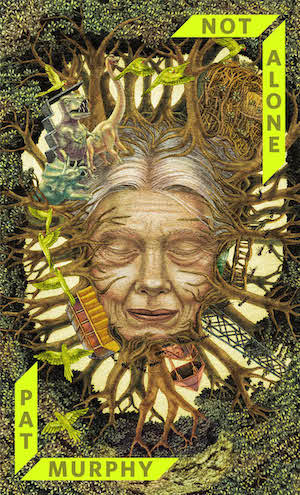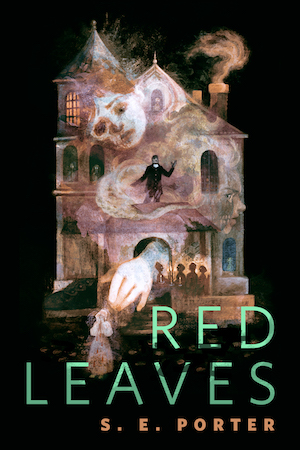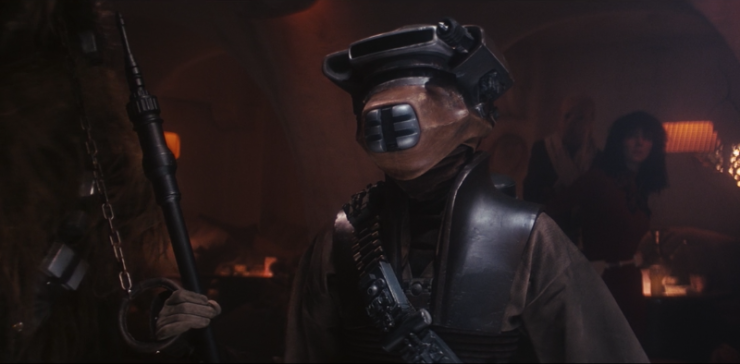When I was nine, on a weekly trip to the local Toys R Us, I glimpsed my hero in miniature: Leia Organa, in her Boushh disguise, hanging on the racks alongside the other Star Wars action figures. I hemmed and hawed over whether to ask my parents to buy her before deciding that it didn’t make sense because I already had Leia—that is, the classic Princess Leia action figure, complete with real fabric for her signature white dress. But by the time we were back at Toys R Us the next week, and I had decided I would add this figure to my collection, Boushh had disappeared. Someone else had taken them home. I was bereft; in the early-Internet era of 1998, I couldn’t easily order it online—even eBay was relatively new back then. It would be a decade or more before I would come across another Boushh figure; at the time, I was more and more convinced that I had dreamt that such a toy even existed.
Whenever I regretted not buying that figure, I could always rewatch the beginning of Return of the Jedi, where Leia-as-Boushh infiltrates Jabba’s palace to rescue Han. Obviously, the gold slave bikini is Leia’s most (in)famous outfit from that film, but those two short scenes where she is disguised have always most crystallized the character for me. In contrast to the brave royal diplomat we’ve followed for the first two films, who lifts her chin and has a biting retort for the Imperials who obliterate her planet in front of her, who tosses plenty of snark at the men who supposedly come to rescue her, this Leia sticks to the shadows. She plays the part of a scummy bounty hunter and has the stones to bluff with a thermal detonator in front of Jabba himself.
It’s only about seven minutes out of the entire original trilogy, and yet I was enraptured with the Leia I saw under that bounty hunter mask. But it took me twenty-plus years later to finally realize why: Leia-as-Boushh is the space opera equivalent of the fantasy trope of a girl disguising herself as a boy to train as a knight.
It’s frankly surprising that I didn’t cotton on to this comparison sooner; at the same time that I was mourning my lost Boushh figure, I was also immersing myself in the world of Tamora Pierce’s Tortall by way of scrappy Alanna of Trebond. Barred from knighthood because of her sex, “Alan” cuts her hair, binds her breasts, and throws herself into training as a cranky, runty boy, but a boy nonetheless. As a girl in the 1990s, I was enchanted by the notion that someone like me could skirt the rules, find the loophole, and open up an entire new universe of opportunity if she wholeheartedly committed to being this other version of herself.
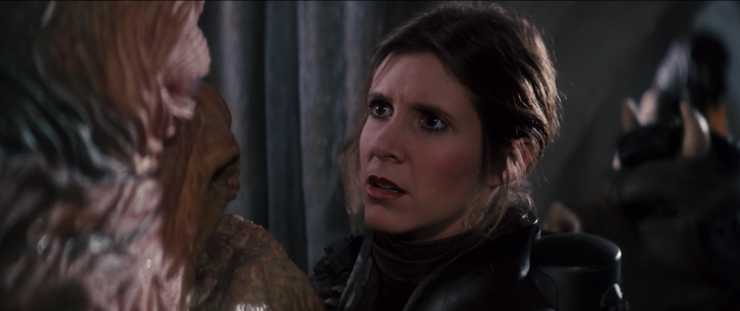
It’s important to note that this trope isn’t about becoming an entirely different person; Alanna would have died a dozen times over if her scrappiness and sheer stubbornness hadn’t laid the foundation of the persona she showed the other squires and the few people who knew her secret. It’s just that the men in her life—the training master, the king, traitorous kidnappers, her nemesis Duke Roger—were more willing to trust those same qualities if they were rooted in supposed masculinity, as opposed to the frilly, soft femininity they dismissed. Up until Return of the Jedi’s release in 1983, the masked figures in the Star Wars universe had all been male: Darth Vader; Boba Fett; Stormtroopers. Each had his reasons for not removing his signature helmet, but there was never any doubt that the face underneath was anything but male.
That’s the other advantage of this sort of disguise: It lets others see what they want to see. Jabba himself hands out rare praise in response to Boushh flipping that thermal detonator switch: “This bounty hunter is my kind of scum… fearless and inventive.” The Hutt would never pay Princess Leia Organa that compliment—in fact, once she is his prisoner, he goes out of his way to objectify and demean her—but the fact remains that it is not Boushh who is able to keep his cool over the rapid-fire ticking of the detonator. Nor Boushh who later tiptoes through Jabba’s sleeping palace to catch a swooning smuggler thawing out of carbonite. That’s all Leia.
Girls who disguise themselves as boys face extreme consequences should they be caught: exile at best, death at worst for daring to step out of their station. However they would be punished, it would effectively ruin their futures. But they do it because they don’t have a real future to aspire to in the first place. In Steve Perry’s Legends novel Shadows of the Empire, where Leia originally gets her iconic disguise, Boushh is a means to an end: a way of sneaking onto a planet in order to meet with crime lord Prince Xizor, in order to find out who is trying to kill Luke. But when she appears to the Black Sun mastermind as herself—princess, diplomat, Rebellion hero—Xizor weaponizes her femininity against her, employing pheromones to seduce her away from her initial plan. After nearly being taken advantage of when she was Princess Leia, it’s no surprise that she would choose to remain hidden beneath Boushh’s helmet in Jabba’s palace.
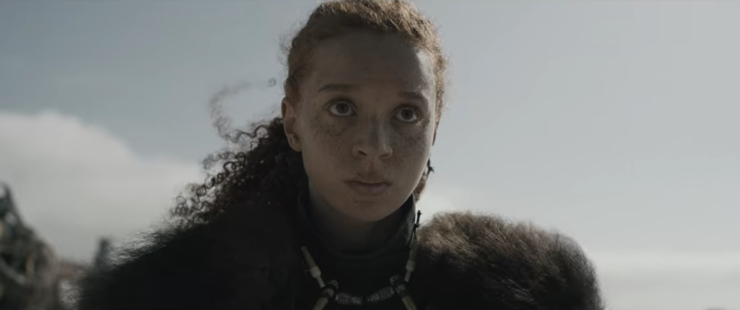
The decades and Star Wars films and TV series released following Return of the Jedi have seen a rapid uptick in female-presenting characters who adopt varyingly androgynous masked disguises. Zam Wesell, the shapeshifting bounty hunter whose female humanoid appearance was another layer of disguise for her true form. Cloud-Rider Enfys Nest, who conceals her age and sex under layers of armor and a mouthpiece in order to maintain her reputation as a fearsome, presumably male, pirate. Sabine Wren, who modifies and personalizes her Mandalorian armor, which bears centuries of history yet gains new life every time she turns her airbrush on it. And Zorii Bliss, Keri Russell’s enigmatic scoundrel in The Rise of Skywalker, with perhaps the coolest helmet yet—and hopefully quite the story beneath it.
Before we knew that General Leia would be returning in The Force Awakens and in subsequent Star Wars adventures, these pirates and assassins and Mandalorians felt like her descendants, in a sense: women who knew that the path to success involved removing any distractions about their femininity, who by presenting as androgynous or male were actually whittling themselves down to their vital components—their cunning, their courage, their ruthless decision-making. It would be poetic to say that they might have heard a story about a princess dressing up as a bounty hunter, but this is, of course, impossible, as all of the aforementioned women (with the exception of Zorii Bliss) donned their respective disguises long before Leia began fighting for the Rebellion.
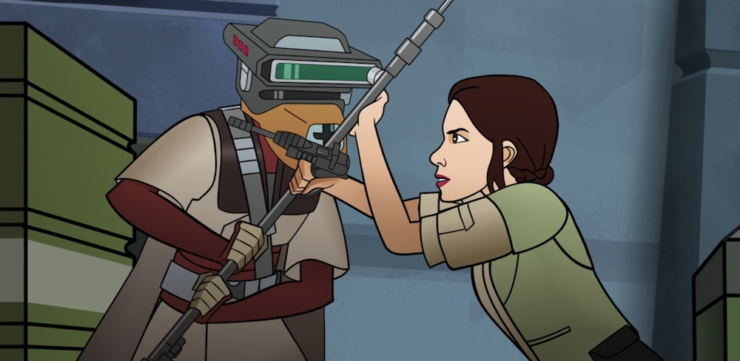
The new Star Wars Expanded Universe canon has changed the specifics of how Leia found her alter ego in Boushh. Instead of Xizor’s bodyguard Guri providing the clothes of the bounty hunter she killed (for, ironically, demanding too much money), it’s Maz Kanata who provides Leia with her opportunity: In the Forces of Destiny short “Bounty Hunted,” Boushh follows them to Ord Mantell, and Leia (with some assistance from Chewie and Artoo) incapacitates him and steals his armor. He also tries to use the ol’ detonator on her, a detail she tucks into the back of her mind along with the handy weapon. The only thing that would have made the story that much more perfect would be if Leia herself had remembered hearing a story, while growing up, about Enfys or Sabine, and how they moved through the galaxy.
Although if there’s one figure from which Leia drew inspiration, it may have been her mother Padmé, the former Queen of Naboo. Working in tandem with her handmaidens, the young ruler hid in plain sight: regularly swapping places with her doubles, their faces painted to smooth out any discrepancies, with her own left bare. Consider how many of us seasoned Star Wars fans missed the moment in The Phantom Menace where the real Padmé, ducking under her hood, issued a royal edict in the form of supposed handmaiden advice: “We are brave, your highness.” Padmé, Sabé, Dormé, and the rest of her entourage amplified their femininity through the Queen’s extravagant makeup, headdresses, and gowns, and the handmaidens’ consistently matching ensembles, to subvert the trope of hiding behind a mask and an unfeminine form.
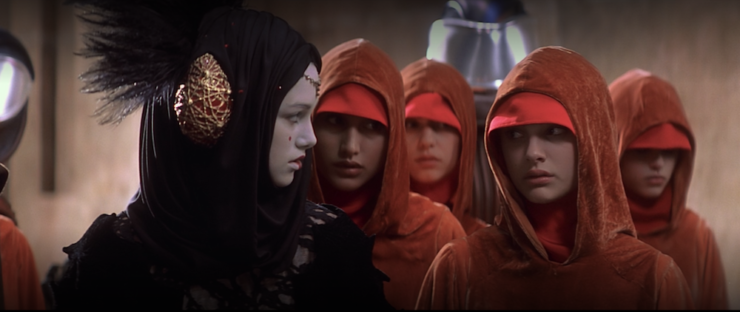
I could swear I remember a passage in Shadows of the Empire in which Leia is tempted to stay as Boushh. After an extended period undercover, walking and thinking and speaking like the Ubite bounty hunter, she considers that it would be easier to hide in this new persona rather than place the mantle of princess, with its attendant failures and grief, back upon her shoulders. Strangely, that passage doesn’t seem to exist, at least not in that chapter of Leia’s story. But I like to believe that she experienced that moment of temptation, really weighed the consequences… and then she took the helmet off and let her eyes readjust to the life that all this was working toward.
Originally published December 2019.
Natalie Zutter wrote this piece under the trusty gaze of her Boushh Funko POP. Squee with her about all things Star Wars on Twitter!


